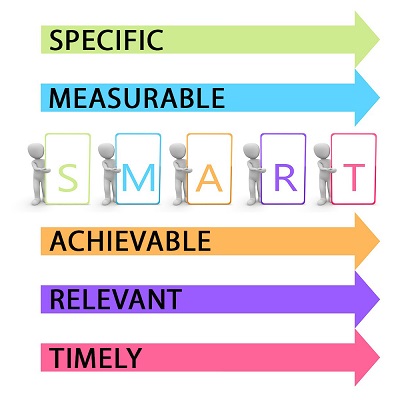 Whether setting out to achieve your personal goals or working through a series of goals together as a team, being successful doesn’t come without overcoming inevitable challenges along the way. The goal-setting process is a necessary step that involves the creation of SMART goals and the development of a clear action plan to achieve the specific agenda.
Whether setting out to achieve your personal goals or working through a series of goals together as a team, being successful doesn’t come without overcoming inevitable challenges along the way. The goal-setting process is a necessary step that involves the creation of SMART goals and the development of a clear action plan to achieve the specific agenda.
Goal setting is a very powerful step that needs to be considered before undertaking action in the hope of achievement of important aims. Actions may involve a certain degree of risk and the utilization of resources, and thus need to be aligned to and consistent with our objectives.
The process of goal-setting allows us to clarify these aims and to envision the future so that we can calculate risks and determine the steps that will take us closer to our goals. By constructing our goals carefully, we can have a guide on where to focus our resources and efforts, motivate ourselves regularly, and work diligently to achieve our aims.
To ensure the creation of clear and powerful goals that will move us forward consistently, our goals need to conform to SMART guidelines.
SMART is an acronym for:
S – Specific
M – Measurable
A – Achievable
R – Relevant
T – Timely
To determine how effective our goals actually are, they need to be checked for adherence to the SMART criteria.
S stands for Specific
It’s not enough to know what you want. In the goal-setting process, you need to create a map to guide and direct your actions towards what you want. Goals need to be very specific.
Otherwise, you risk losing time and valuable resources doing everything you can, only to realize much later that you have missed hitting the mark because you were too broad or vague in your goal setting. Being specific means including sufficient details to guide you in reaching your goals.
M stands for Measurable
Another important criterion that needs to be met by your goals is that it needs to be measurable. This determines the metrics you will need to consider to determine how far along you are when working towards achieving your goals.
By setting the time frame you have allowed you can easily set achievable milestones every month or pre-determined period to track your progress. The measurability of your goal is vital in monitoring your improvement and provides a short-term incentive to stay on target.
A stands for Achievable
Your goal needs to be achievable. Achievable goals confirm that change can take place, movement will happen, and progress is possible. There is a certainty that you can make it. For a goal to become achievable, you may need to take into consideration the actual steps you need to take to accomplish your goal.
Additionally, you may also consider possible constraints that will limit your actions. In this step, you can be as resourceful and creative as you want.
Consider which tools, skills and assets you can use to your advantage, and which weaknesses you will work on so they will not hamper your progress.
R stands for Relevant
A powerful goal is relevant, which means it is aligned with your purpose. It is significant enough to you that you will do whatever it takes to make it possible. Without this element in your goal, it’s too easy to get sidetracked and lose focus.
After all, there are so many other goals you could work on, so which is of greater importance? Knowing how relevant your goal is to you increases the likelihood of its achievement. Relevant goals will often validate our mission and long-term vision.
T stands for Timely
Time is often our most limited resource in achieving goals. Goals need to be time-bound, as it creates the necessary pressure and sense of urgency to move us forward. When you plan on doing something, always associate a timeline or deadline to it.
To increase the likelihood of success in your goals, you need to have the certainty that it can be achieved within a certain timeframe. This enables you to strategize your action steps to successfully reach your goals.
An Example of a SMART Goal
Compare the vague “to be financially independent”, with “To pay off all debts and have at least X amount of savings by this particular date.”
Let’s check out the second one against the SMART criteria.
To pay off all debts and have at least X amount of savings by X date.
The above goal is very Specific.
The inclusion of these specific details will clarify the exact minimum amount of savings you will need to strive to achieve within a certain time frame. Saying ‘to pay off all debts’ is also an absolute number statement to sufficiently guide you, as the operative word all signifies zero debt.
It is certainly Measurable and the increase in savings and reduction in debt can be checked at any time, ideally at regular and pre-determined intervals.
Whether it is theoretically Achievable can be readily determined at the start with a calculator. If not, adjust your figures to make it so.
Relevant? Most certainly to almost everyone.
The goal is made time-bound or Timely by the inclusion of a date for the achievement.
The first vague goal provides little incentive to maintain short-term impetus toward the goal. It is most likely that at some point in the future little will have changed, and the position may have even deteriorated.
The SMART rephrasing of the goal will provide a framework that will help to maintain focus and the incentive to continue working to achieve the goal.





